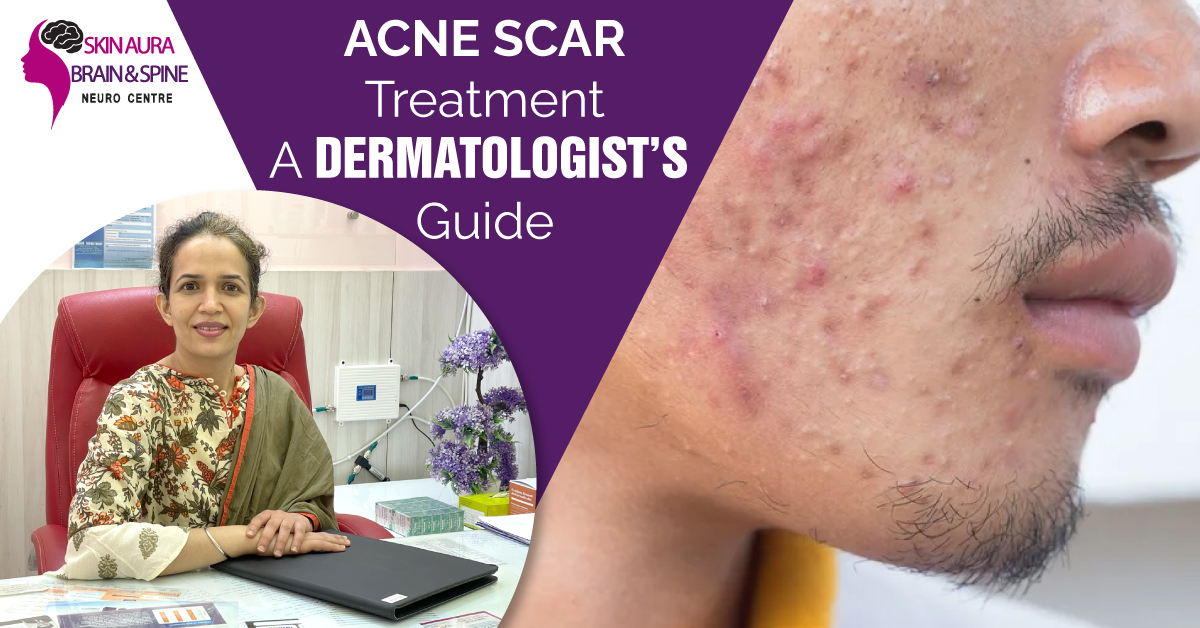Our self-esteem can take a severe hit from acne, which is highly upsetting. It’s not uncommon for acne scars to remain even after active acne has been controlled and cleared with the right skincare products. With a dark spot remover, post-acne dark spots and hyperpigmentation can be successfully treated. However, removing real, textured acne scars is a difficult task. However, it’s doable!
What are the best in-office acne scar treatments?
Acne Scar Treatment with Fractional Microneedle Radiofrequency (FMRF)
Depressed acne scars can be effectively treated with non-surgical acne scar removal treatment in Delhi NCR, such as Fractional RF Microneedle (also known as Fractional Microneedle Radiofrequency). It’s a combination of micro-needling and radiofrequency, two highly effective treatments for skin rejuvenation for even greater efficacy and minimal side effects.
It works by inserting gold-plated needles into the skin’s dermis (micro-needling). To stimulate new collagen production and fill in scar depressions, the needles must be inserted into the skin until they produce a mild amount of heat (radiofrequency) (variable—.25-5mm). After a few hours of red skin, patients can return to school or work the next day with no visible signs of treatment.
Treatments for Acne Scars by Fractional Laser Skin
An alternative acne scar reduction treatment in Delhi NCR, Fractional Laser Resurfacing (also known as a laser peel), uses pulsed laser beams to target the skin. Fractional and non-ablative laser resurfacing are the two main types of laser rejuvenation.
Ablative Laser Resurfacing
This treatment resurfaces (or removes) the outer layers of the skin, which is how it works. As the name suggests, non-ablative lasers don’t harm the skin’s surface. Carbon dioxide lasers for acne scar treatment are the most common ablative lasers (CO2 Laser Resurfacing). Micro-burns are made in the skin to stimulate the production of new collagen. Resurfacing with ablative CO2 and Erbium lasers is available.
FRA laser treatment usually has the effect of smoothing out new skin, decreasing the depth of atrophic scars, and softening the overall appearance of scarring. Results and efficacy are often similar to microneedle radiofrequency. Still, this procedure has more pain, downtime, and a greater post-treatment hypo and hyperpigmentation risk. The laser treatment for acne scars cost is affordable for all.
In general, the skin recovers from ablative laser treatment within two weeks, but it may remain red for some time after the healing process has been complete. Over a few weeks to several months, the redness will begin to fade. The Skin Aura Brain and Spine Neuro Center has a list of more severe side effects, but they are scarce.
Acne scars can be removed with a chemical peel
A chemical solution is used to remove the old skin’s outer layer in moderate and deep chemical peels, which improve the appearance of acne scars. When it comes to the new skin, it’s usually smoother and has a more even tone.
As a result: Superficial peels with lactic acid, glycolic acid, and other alpha- and beta-hydroxy acids can improve skin texture and fade dark spots, but depressed acne scars will not be significantly affected.
Side effects include: After a light chemical peel, patients generally experience a mild redness lasting from 3 to 7 days. Those who experience moderate to harsh chemical peels can expect significant swelling and blisters that will turn brown and peel off within seven to 14 days of the procedure.
Additional risks include the potential for a chemical peel to permanently or temporarily alter the skin’s color. Additionally, these treatments have the potential to reactivate cold sores and, in rare instances, result in additional scarring.
Dermal Fillers for depressed acne scars
Treatments for depressed acne scars that do not respond to the above remedies include dermal fillers, similar to those used for wrinkle reduction or lip plumping.
Using dermal fillers, acne scars can be reduced in appearance by injecting a needle into the scar and filling it with the chosen fluid until the scar depression is filled. Based on the number and severity of scars being treated, a patient’s filler needs will be determined by various factors. The type of filler you use will depend on the recommendation of your doctor or dentist.
Hyaluronic acid fillers are the most commonly used for acne scars.
After dermal filler treatment for acne scars, the results are temporary and typically last for three to four months. Dermal fillers can help break up scar tissue and stimulate collagen production, reducing the appearance of scars over the long term and the immediate and short-term benefits they provide for acne scar appearance.
A possible side effect of this medication is injection site swelling, redness, and bruising, but this usually goes away after a few days or weeks. Allergies to dermal fillers, while rare, are possible with today’s formulations. The injection site may become infected, an uncommon but not impossible risk.
Skin care procedures designed to enhance the appearance of acne scars and boost a patient’s self-esteem are known as Acne Scar Treatment.
